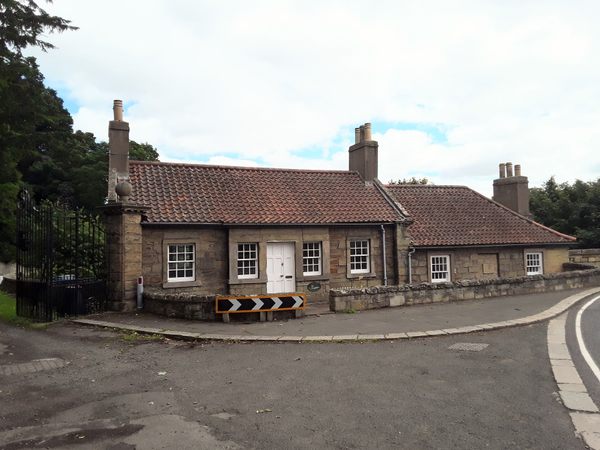In the 18th century, the law of England stated that anyone under 21 must have consent from at least one parent before they could get married. But as Scottish law contained no such a requirement, many eloping couples with disapproving parents sought a solution by crossing into Scotland. This form of marriage took advantage of the more lax marriage requirements that pertained in Scotland which only required a declaration before witnesses.
The most famous place was in the West of Scotland, just north of the English town of Carlisle, Gretna Green. Even today, the wedding industry is important to the old blacksmith’s shop at Gretna Green. The fame of the Gretna Green site has resulted in many clandestine marriages being referred to as a “Gretna Marriage,” but it wasn’t the only spot where lovers seeking a cross-the-border wedding could go.
Coldstream, in the area then known as Berwickshire and now known as the Scottish Borders, the River Tweed forms the border between England and Scotland. The Tweed Bridge tollhouse was the first building on the Scottish side of the border, and it hosted hundreds of marriages. Ceremonies were conducted for a fee by self-styled “priests,” who had no qualifications but saw an opportunity to monetize the practice. They provided the witnesses from the local populace (often their own families) for a fee and entered their names in “registers” which provided apparent legitimacy. Few of these have survived.
One of the most famous marriage celebrants at Coldstream was William Dickson. At least 1,466 couples were married by Dickson over a period of 13 years. Although Scottish law did not actually require consummation of the marriage it is reported that Dickson refused to hand over a certificate until he believed the marriage was “complete.” This was, perhaps, to extract a little more cash for the rental of a room.
In 1856, an act of parliament outlawed rapid clandestine marriages by introducing a 21-day residency requirement. The tollhouse eventually became known as the Old Marriage House. It has been reported that five earls and a couple of Lord Chancellors of England took advantage of the legal loophole before the law was changed. Ironically, the Parliamentary Bill that changed the law was sponsored by Lord Brougham, a Scot who had himself been married, in the Newcastle Arms at Coldstream, under the previous law.
A while before the law was changed the bridge tolls were discontinued (1826) and over time the house fell into disrepair. It was restored in 1957. In the intervening time the Toll House served as in inn called the Bridge Inn.

